We’ve all seen the Mad Men episode where Don Draper strides into the room and sells the client a complete idea. One client, one agency, one easy decision. Life was simple then, but today, with multiple stakeholders, markets and agencies, companies need a far more disciplined approach to improving integrated marketing.
It was with this thought in mind, we initiated “Integration 40”, a fresh look at 40 of the best integrated marketing campaigns and processes from around the world. We reviewed hundreds of campaigns from six continents before selecting the final list.
Along the way, and through our other consulting work on integration,
we discovered something else.
Waste.
Most marketers and Agencies are wasting time, wasting money and wasting the best thinking on the path to making communication. Based on our own analysis, we believe there can be as much as a 19% value improvement through following some basic principles.
In our report, you can already see the world’s best marketers are seeking to drive out this waste. P&G are bringing media owners into the process to streamline decision making. Unilever are working on fresh collaboration approaches to their global marketing to build better ownership and results. Coca-Cola are using tissue sessions with all stakeholders to reiterate faster and get to better thinking.
So what can you do to find that 19%?
Waste Trimmer One – Focus on the Big Idea
A good integration process can help a bad idea, but it won’t save it. Look to Coca-Cola and others to really streamline the creative process and have multiple rounds of exploration on strategy, not just on creative. The most successful campaigns in Integration 40 have a Big Idea at the center.
This approach can generate up to 5% value improvement.
Waste Trimmer Two – Define Roles Clearly
From our work, this is the number one area of waste in the development process. The creative agency thinks it’s the Brand Strategy custodian . So does the media agency, the digital agency, the packaging agency and the event agency. They all invest separate time in insight generation, and can often take the brand in multiple directions. The best companies define roles very clearly from the beginning and don’t “double dip” on research , strategy and creative.
We typically see as much as 10% value improvement in this area.
Waste Trimmer Three – “Curate” as much as “Create”
To trim the waste, you have to crush the “Not Invented Here” syndrome. The marketing world can be a destructive place for ideas. Look for good thinking from your past, from your competitors, from your consumers. The best agencies have accepted this and have learned to ‘curate’ content from others.
Many are already doing this, but for those who are not, improvements can be as much as 10% in value.
Waste Trimmer Four – Set the Right Incentives
Human beings respond to the right sort of motivation and accountability. Without transparency in money or the right metrics in place from the very beginning, performance will be limited to a budget-first mindset. Some of our clients now have an “Agency Evaluates Agency” approach at year end – “Dear Media Agency, just how do you our Creative Agency for collaboration and leadership?” The answers often surprise people.
Typically we see as much as 5% value improvement here.
Waste Trimmer Five – Training Matters
Integration is like riding a bike – you do get better with practice. The reality is, leading companies are investing as much as 10% of their marketing team time into training – on the latest trends in social, mobile and analytics. Take the time to improve
This improvement is more qualitative and generates improvement over time.
Waste Trimmer Six – Look to Best Practice
The purpose of Integration 40 is to help set the bar and start the discussion on Global Best Practice. If you only look inside your own company and agencies each year, you will narrow your scope. Run an annual Best Practice workshop, Benchmark and create awards for the best processes. Try to change behavior.
Improved benchmarking can drive as much as 10% improvement.
On our consulting work, we see ranges from 5% to 19% value improvement through a better integration process. But this is just the start – the other thing to consider is which model is right for you.
Managing an integrated marketing process is complex today – but based on current trends, will never be less complex in the future than it is right now. In the end, we saw six types of alignment structures and we classified each of the final 40 accordingly.
1. Multiple Best in Class Agencies
In this model, the marketer had to lead efficiency gains – they lead integration – choosing the best possible creative, media, digital, PR and event agencies regardless of their parents – and then has the task to put them together. This is by far the most common method we see – the “best of breed” and it occurred in 38% of cases in our analysis. The challenge with it, is that it puts a lot of onus back on the marketer – companies such as Coca-Cola have now set up IMC teams just to ‘herd all the cats”.
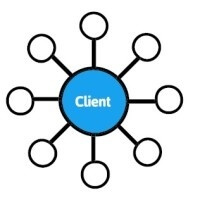
2. Lead Agency Model
Done to its full extent, as P&G has tried over the years with its “Brand Agency Leader” model , this structure puts the pressure back to the lead agency to drive integration. We saw this model in 25% of cases, and what was more interesting was to read new examples of Lead Agency – when someone other than a creative agency was taking the lead (32% of occasions). The world did not end, and the campaign was still executed brilliantly. Expect to see more of this model in the future.
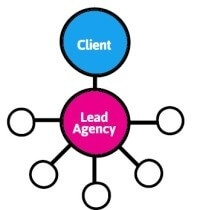
3. Sibling Agency Model
Here, the holding company takes the lead on behalf of the client – when the Holding Company was “invented”, this was no doubt the integration model in everyone’s mind. That it only occurred in 20% of the cases of the final 40 suggests it may yet to be seen as the optimal model for the future. In this structure, there’s a simplicity in the working process, but a potential lack of flexibility for the marketer when things go wrong. No one is ready to throw the baby out with the bathwater.
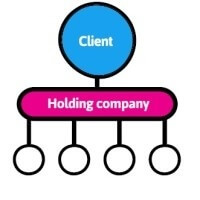
4. Holding Company Custom Agency
Much loved by Apple. Envied by others. Tried by Dell in the past. Working well for Ford, Colgate and others, this is essentially about a holding company pooling resources into a dedicated 100% team within a holding group. . This can only work well for clients with scale, but of course, has its own challenges with attracting the best creative talent and breakthrough thinking.
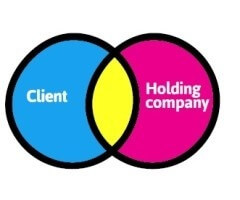
5. Free Agent
Here in this era of crowdsourcing and social, will this be a new model whose time is to come? We look at Sony, with its nine roster agencies fighting on a project by project basis. This has also been an approach tried by Intel in the past. What the marketer gains in total flexibility of creative resources , it surely loses in terms of strategic governance and contribution. Unilever and JWT just celebrated 115 years together – how would both companies be performing if it was only 115 days?

6. One Stop Shop
A relic of the Mad Men days, but still the common approach in Japan, Korea and Brazil, along with smaller marketers who simply can’t afford multiple agencies. For every person who dreams of creative and media agencies merging back again , there must surely be two who recognize the giant strides in media sophistication that has occurred with them apart. While we saw this in 10% of our relationships. We wonder in five years time if this will be the case.
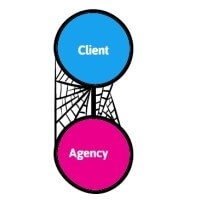
To make the Top 40, we established a Consistent Scoring criteria and reviewed every single submission against four key areas.
Proven on top brands
We weighed more heavily work done for complicated brands from the world’s top 100.
Proven on creativity
Motivating consumers in this new age requires breakthrough thinking. Award winning work was more highly weighted.
Proven on process
Integration across stakeholders is never easy. Submissions had to explain specifically what made their process unique and what made it work
Proven results.
Nothing speaks louder than improving brand equity, or better still, the cash register.
Choosing the final 40 was a passionate, much debated and thankless task. But as you read through them, you will say they all share very clear objectives, brave thinking, a strong and collaborative process, and exceptional results.
Integration matters – to the world’s best marketers, their agencies and to us. We hope you enjoy the cases at www.R3integration40.com.
R3 is a leader in global, regional and local consulting on Best Practice in Integration and IMC. We work with nine of the world’s top twenty marketers including Coca-Cola, Unilever, AB InBev, MasterCard, Mercedes Benz, Johnson & Johnson, Samsung and Kimberly Clark.
For more information, visit www.rthree.com, or contact Talia Tay at [email protected] or +1 646 416 8088





